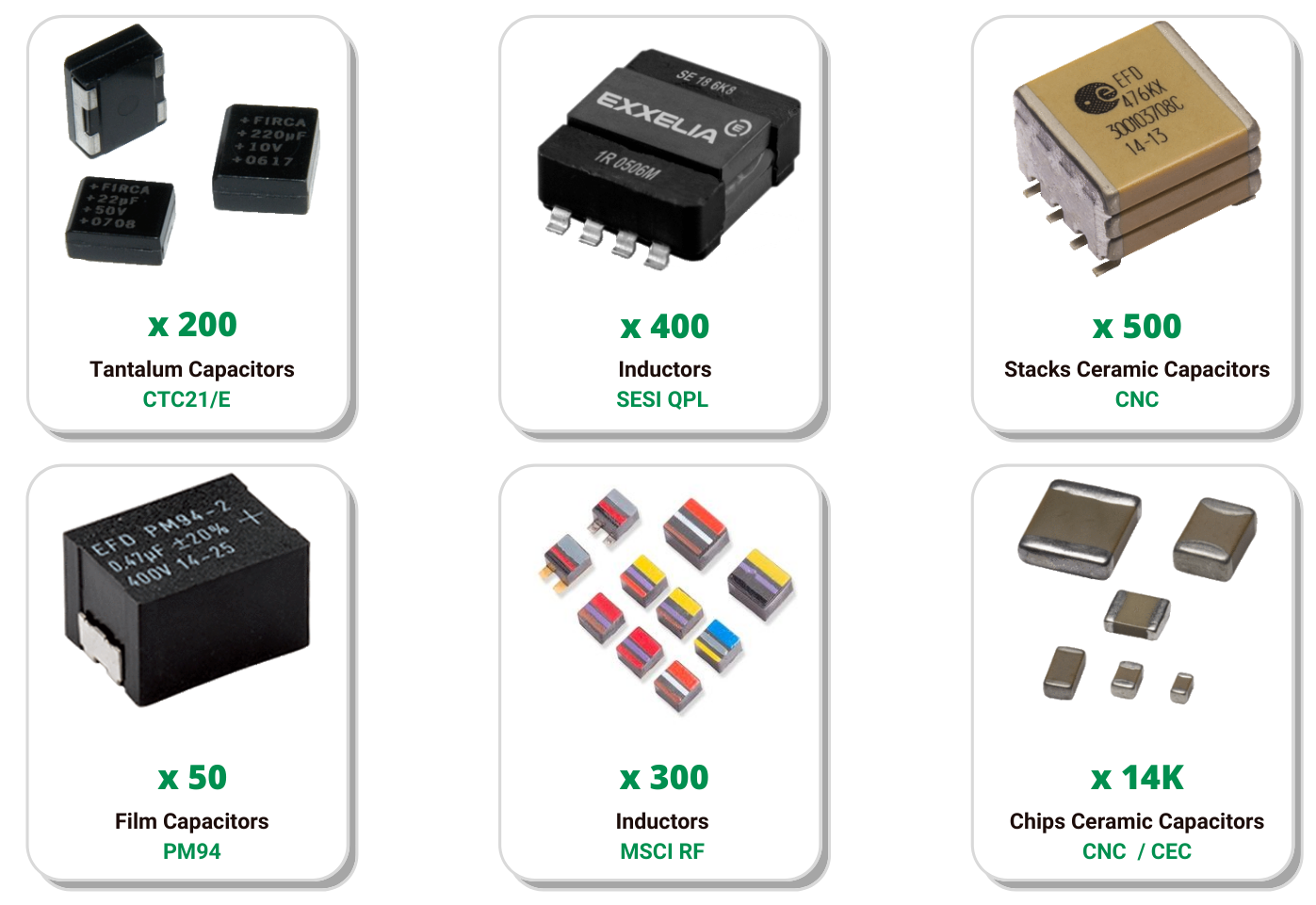Exxelia à bord de Solar Orbiter
Exxelia est fière d'être à bord de Solar Orbiter qui emporte plus de 16 000 de nos composants passifs pour fournir un aperçu sans précédent du fonctionnement de notre étoile mère !
Solar Orbiter, une mission de l'Agence spatiale européenne, a été lancé à bord d'une fusée Atlas V 411 (AV-087) depuis le complexe de lancement 41 de la station aérienne de Cap Canaveral à 23 h 03 EST le dimanche 9 février 2020. Le satellite a atteint sa première orbite autour du Soleil, appelée "orbite de halo" et est prêt à commencer sa première campagne d'observation scientifique. Cette campagne durera six mois, au cours desquels les 55 éléments embarqués seront activés un par un et testés avant d'être utilisés pour effectuer des observations scientifiques.
Solar Orbiter est un laboratoire scientifique très complexe. Le déploiement d'une telle mission est un exploit unique en son genre ! La mission durera des années et constitue l'une des expériences scientifiques les plus attendues de notre siècle. Et vous savez ce qu'on dit : c'est en relevant les défis les plus difficiles que l'on accomplit le meilleur travail. Malheureusement, ces défis ne se trouvent pas seulement dans les laboratoires, mais aussi dans l'espace.
Pour étudier le Soleil et son activité comme jamais auparavant, les scientifiques envoient une sonde en orbite autour de ce dernier. Solar Orbiter devra faire face à des températures allant jusqu'à 500 °C, ce qui est généralement impossible à supporter pour des équipements complexes. Mais savez-vous ce qui est encore plus difficile que d'obtenir des données dans un environnement solaire chaud de 500°C ? Obtenir ces données avec un équipement coûteux qui ne fonctionne pas, parce que vous n'avez pas assez de composants fiables à votre disposition ! C'est pourquoi, chez Exxelia, nous avons été si heureux lorsque nous avons appris que des milliers de nos condensateurs et de nos composants magnétiques avaient été choisis par l'Agence Spatiale Européenne pour réaliser cette mission ; nous parlons de composants qui continueront à fonctionner dans de telles conditions difficiles ! Ils aideront les scientifiques à mieux comprendre le flux d'énergie et l'accélération des particules dans notre propre système solaire et au-delà.
Il est surprenant de constater que le Soleil est en grande partie un mystère. Nous avons une certaine connaissance de sa composition, mais nous ne savons pas comment les phénomènes que nous observons se produisent. Solar Orbiter va nous aider à avoir une meilleure idée de ce qui fait fonctionner le Soleil en prenant des images et observations les plus détaillées de notre étoile.
Parmi les instruments de Solar Orbiter, on trouve : un imageur grand angle et un imageur coronal. Chacun d'entre eux fournira des images à haute résolution - d'un ordre de grandeur supérieur à celles capturées par le Solar Dynamics Observatory de la NASA - et des vues spectaculaires des régions polaires du Soleil. L'imageur grand angle capturera des images dans cinq longueurs d'onde, tandis que l'imageur coronal utilisera sept longueurs d'onde pour observer les phénomènes qui affectent les couches supérieures de l'atmosphère solaire, comme les champs magnétiques et les flux de plasma. Nos condensateurs et nos systèmes magnétiques sont essentiels pour stabiliser et alimenter ces instruments dans leur mission d'exploration de notre étoile domestique ! Ils doivent pouvoir fonctionner dans un environnement très hostile avec des températures allant de -150°C (-238°F) à 500°C (932°F). Les températures atteindront leur maximum lors des survols les plus rapprochés du Soleil, qui auront lieu à 15 millions de kilomètres (environ 93 millions de miles) de sa surface. Nos condensateurs et nos systèmes magnétiques spatiaux sont capables de supporter des températures élevées. Ils continueront même à fonctionner dans des conditions cryogéniques, jusqu'à -150°C (-238°F). Ces composants sont également durables, ce qui les rend parfaitement adaptés à ce type de mission.
Choisir les bons condensateurs pour une telle mission n'a pas été facile. Les exigences et les contraintes techniques étaient très strictes. Nous avons également dû étudier et sélectionner les matériaux qui pourraient supporter les vibrations et le choc de la phase de lancement de la fusée. Ce projet prouve que nos composants EXXELIA sont incroyablement fiables et n'ont rien à envier aux autres composants électroniques du marché. Plusieurs autres tests ont été menés par l'ESA dans le cadre de ce projet tels que les radiations solaires, les chocs thermiques.
Produits QLP d'Exxelia ESA à bord de Solar Orbiter :
14,400 CNC chips ceramic capacitors
14,400 CEC chips ceramic capacitors
520 of our CNC stacks ceramic capacitors
